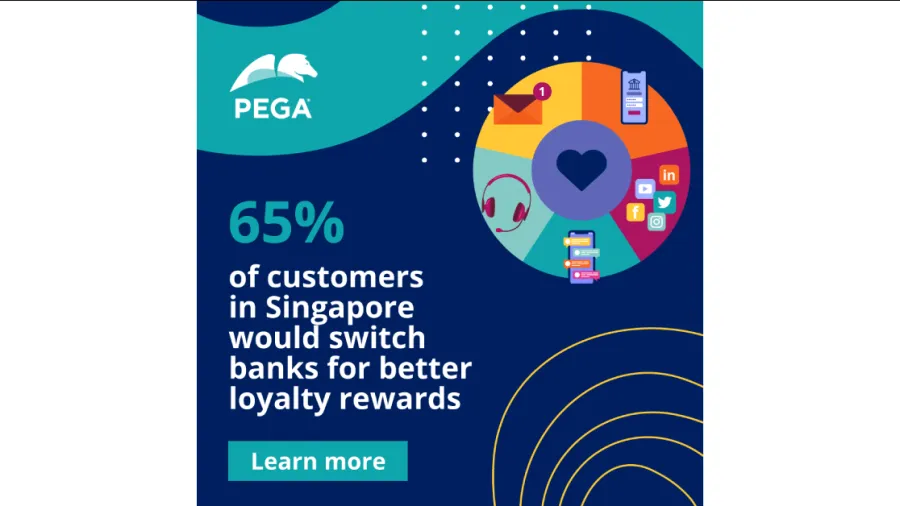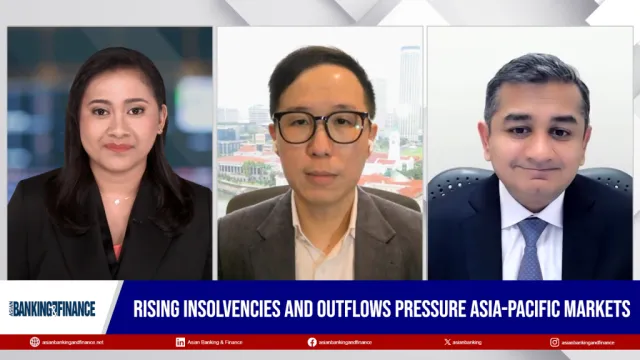
Give loyal customers the royal treatment: how to stand out in Singapore’s banking sector
Jonathan Tanner, Senior Director, Industry Principal Financial Services & Insurance APJ, Pega
When it comes to their banks, Singaporeans are committed customers. 43% have been with their main bank for over 15 years, especially if they use market leaders DBS and POSB. Customer loyalty has given the country’s banks the predictability they need to plan for the future – but this stability is under threat. Banks are not only vying for customer attention with each other, but with non-bank forces such as AliPay and WePay. The sector is also facing the largest generational wealth transfer in modern times. Baby Boomers are in the process of passing their wealth onto their children, who are far more likely to spend or invest their inheritance outside of traditional banking institutions. And in Singapore, also known as the ‘Switzerland of Asia’ because of its large private banking sector, the risk of massive capital outflows is particularly high.
So, two questions arise: How do you attract and retain customers in a hyper competitive market? And how do you convince them to keep their money with your institution?
Customer experience (CX) is king in the digital age
Singaporeans are, on average, dedicated mobile users and early adopters of new banking and payment solutions. Nearly two thirds regularly use mobile payments, and 80% use online banking often or quite often. With so many taking up digital options to conduct their banking, CX has become a strong focus for financial institutions.
Singaporeans, particularly DBS and POSB customers, typically stay with their banks for years. But original research we conducted with Omnipoll found that the longer customers stay with their bank, the more dissatisfied they are with their loyalty programs.
Our findings:
- 93% of respondents want to be offered the best rewards and rates for long-term loyalty, but only 62% agree that their main bank delivers
- 68% agreed that their bank should stop trying to sell them new products and services, and start rewarding their loyalty
- Finding better loyalty rewards elsewhere is, along with interest rates, the main reason why customers leave their banks
Reward loyalty with a personalised CX: turn customer pain into customer gain
Our research shows that Singapore’s banks are falling short when it comes to recognising customer loyalty. With satisfaction levels sitting at 84% regardless of which bank they use, rewarding those who stay could give you the edge in a market where there is no clear leader.
So, what would this look like? A personalised CX will be a key factor in retaining customers long-term. Banks already hold all the data they need to deliver a tailored experience – what’s missing is a solution that can unlock that data’s potential.
To achieve this, banks need to be able to analyse a customer’s banking history, and physical and digital interactions on a mass scale. This requires a technology that uses AI, automated decisioning and real-time data to create communications tailored for a customer’s unique situation and needs. For example:
- Recognising key milestones (such as every year they remain a customer) with a personalised email and incentive
- Supporting customers through financial hardships
- Offering lower rates to a long-term customers’ children or descendants, provided they have never defaulted on repayments and keep their money with the same institution.
Rewarding customer loyalty can extend beyond a simple offer for the individual. It can also apply to relatives and gives banks the opportunity to retain wealth even when it is transferred within the family.
Banks with great customer relationships deliver high satisfaction, strong advocacy and low churn. For institutions with customer relationship index (CRI) scores of 80+, 90% have recommended them, three quarters would recommend their bank to others, and two thirds are delighted with the service they receive.
Presently, no bank in Singapore has a CRI of 80, with the majority reporting a score of around 70. Rewarding loyalty could provide the platform Singapore’s banks need to strengthen their relationship with their customer base. More importantly, it can create a strong point of difference in a competitive market facing once-in-a-generation change and disruption.
The findings in this article are based on a survey Pega conducted with Omnipoll in 2022. You can read the full research report here.
For more information on how your organisation can use data to drive loyalty, please get in touch with Pega today or join our event ‘AI & Beyond – The Future of Customer Journeys in FSI’ by registering your interest here.


















 Advertise
Advertise








